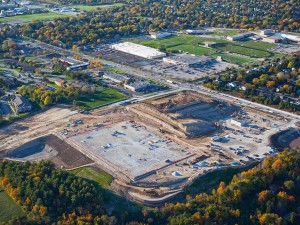 Since the beginning of the century, traditional retailing has survived the dot-com threat and a great recession and all signs point to the sector thriving once again. Many industry analysts believe it will be one of the sectors driving commercial real estate development in 2015.
Since the beginning of the century, traditional retailing has survived the dot-com threat and a great recession and all signs point to the sector thriving once again. Many industry analysts believe it will be one of the sectors driving commercial real estate development in 2015.
Physical stores are still the preferred method of shopping, so much so that several Internet only retailers are experimenting with physical storefronts. At the same time, 20th century formats, designs and technology won’t cut it with today’s tech-driven, speed-oriented, lifestyle consumers. Retail, after all, has always been about what’s new.
Here are several trends we’re witnessing in retail development:
Omni channel retailing.
This is perhaps the most talked about trend in retail development. Rather than separating the various channels customers can use — traditional website, mobile app, physical store — retailers want to provide a seamless experience.
What omni channel marketing means for the physical store is the need to create a customer-driven experience that complements the retailer’s digital channels. Stores will be outfitted with kiosks where customers, after making a purchase in the physical store, can order a certain item in, say, a different color or look through an online catalog of accessories. Traditional checkout lines will give way to sales associates brandishing tablets or smartphones to complete purchases. Digital displays and RFID tags are becoming standard features.
In-and-out vs one-stop shop.
It wasn’t long ago that consumers flocked to large stores or shopping centers with all their wants and needs under one roof. It was convenient. Today, consumers are starting to redefine convenient and want to get in and out of a store as quickly as possible. They don’t mind making multiple trips as long as those stops are done in minutes. That means not walking to the back of a 100,000-square foot super center for one item. Stores being built today will be considerably smaller than in previous years.
Making shoppers stay awhile.
Shopping isn’t always about speed. It still can be a weekend activity or a way to spend time with friends. New department stores are being built as much to entertain shoppers as to get them to buy something. Harsh lighting is being replaced by large windows to bring in natural light. Some modern outlets have coffee shops on balconies and open spaces where social and entertainment events can be held.
Ground up construction vs retrofitting.
There is plenty of both occurring in the retail sector. On the one hand, retail chains continue to follow housing starts in suburbs moving further out beyond their downtown core. Stores also see ground-up construction as a way to create memorable shopping experiences, stay true to their brand identities and to offer unique and nontraditional features. At the same time, millennials are supporting the revitalization of urban cores. These districts offer retailers a variety of vacant buildings, such as banks, warehouses and factories that companies will need to remodel into usable and inviting retail space.
Mall transformation.
Enclosed shopping malls that are still open for business are doing all they can to compete with modern destinations. That means replacing the 1980s facades and interior furnishings, re-configuring spaces to accommodate new tenants and converting vacant store space into entertainment venues.
Green design.
Like many industries, retailers are beginning to request eco-friendly facilities, both as a way to save on operating costs and to build favorable brand reputation.
